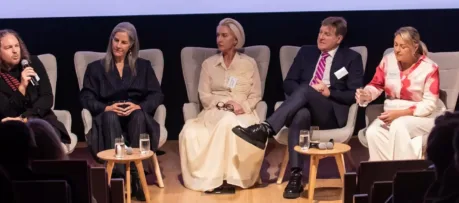Navigating how to get a divorce in Australia can often be accompanied by overwhelming stress and uncertainty. However, with a comprehensive understanding of the process, you can approach it with confidence and clarity.
In this article, we will provide you with a step-by-step guide to help you understand how to get a divorce in Australia and navigate the process with ease.
How to get a divorce in Australia
Here is what you need to do to get divorced in Australia:

Step 1: Meet the separation requirements
The first step is to demonstrate that you and your spouse have been separated for a minimum of 12 months. The separation period signifies the irretrievable breakdown of your marriage.
Even if you are living under the same roof during this time, you must show that you are leading separate lives. This is evidenced by factors such as sleeping in separate bedrooms, managing finances independently, no longer socialising as a couple, and informing friends and family about the separation.
Step 2: Complete divorce documents
Whether you are filing for divorce by yourself (sole application) or with your spouse (joint application), you will need to complete the necessary documents.
Fill in the Application for Divorce, the Affidavit for eFiling Application, and any required Affidavits, particularly if separated under the same roof. These documents should include evidence of your marriage, the 12 month separation, and the breakdown of your relationship. Additionally, you will need essential documents such as your marriage certificate and proof that you are either a citizen, permanent resident, or domiciled in Australia. If you have been married for less than two years, you will need to attend counselling and file a certificate from the counsellor that says you have attended and considered reconciliation. If the other person refuses to attend, then the counsellor can still issue the certificate.
Step 3: File your divorce application
When filing your divorce application, gather all necessary documents and file them with the Federal Circuit and Family Court of Australia. Pay the filing fee (you can find out what that is here) and lodge the documents through the Commonwealth Courts Portal to receive a hearing date. The Court will provide you with a hearing date upon filing the documents.
Step 4: Serve your divorce papers (for sole applications)
After filing your divorce application, serve a copy on your spouse within the specified timeframe. Please note that this is within 28 days before the hearing if you live within Australia or within 42 days before the hearing if you live overseas. Serving divorce papers means providing official notice of the divorce proceedings to your spouse. You cannot serve them yourself. Another person (such as a process server) must serve them and swear an affidavit saying that you have served them. You can serve your documents by post but the recipient needs to sign an Acknowledgment of Service form and return it, and you then have to swear an Affidavit confirming that you recognise their signature.
Step 5: Attend the divorce hearing
If you have no children or the children of your relationship are over the age of 18, then you can check a box on the Application for Divorce form saying that you do not wish to attend the hearing in person. If you do not check that box, then you need to attend the divorce hearing. These hearings are typically held by video link. During this hearing, the court will review your application and, if satisfied, grant the divorce. Attendance is mandatory in certain situations where there are children under 18 years or if a Response to Divorce has been filed.
The Court has a statutory duty to enquire as to whether the arrangements in place for the children are appropriate. Even in cases where neither party has commenced a court case identifying a dispute about the parenting arrangements, the Court still needs to be satisfied that any arrangements for children are proper. You will see that the form requires some basic information about the children’s housing, education, health, financial support, and spending time with each of the parents. You need to be ready to answer any questions that the Judicial Registrar has about the children during the hearing.
Step 6: Finalise your divorce
Once the divorce order is granted, it becomes final one month and one day later. After that period, there is no way that the divorce order can be appealed. After this period, you are legally divorced and free to marry again if you wish. The Court issues a document shortly after, which can be downloaded from the Court’s portal, which you can produce to a marriage celebrant or other authority proving your divorce is final. You may want to produce the document to an authority in support of your choice to revert to the surname you used prior to your marriage.
Frequently asked questions about the divorce process
We are often asked the following questions by clients when they come to us about their divorce:
What eligibility criteria do I need to meet to file for divorce in Australia?
To file for divorce in Australia, certain eligibility criteria must be met. You or your spouse must be an Australian citizen or resident and consider Australia as your permanent home. You have to produce your marriage certificate. If you were married overseas, you may need to obtain a translation into English of the marriage certificate. If you are from a country where marriage certificates were either not produced by the authorities or, due to war or revolution, there is no formal record remaining, then you may need to speak with Watts McCray Lawyers about gathering the necessary evidence to prove that you were married on the particular date according to the law and customs that applied in the country you married in at the time. Additionally, you must be separated for at least 12 months.
Do I need to prove fault or blame to obtain a divorce?
Australia operates under a no-fault system for divorce. This means you do not need to prove fault or blame to obtain a divorce. The sole ground for divorce is the irretrievable breakdown of the marriage. This is demonstrated by the 12-month separation period.
Where do I file for divorce?
Divorce applications in Australia are filed with the Federal Circuit and Family Court of Australia and are filed online using the Court’s filing system. This Court has jurisdiction over divorce proceedings across the country.
Do I need to be divorced to get a property settlement or get parenting orders for my children?
You do not need to be married or divorced to make an application for parenting orders. You do not need to be married or divorced to make an application for property orders, provided you are in a de facto relationship for longer than two years or have had a child or children in the relationship within those two years. You do not need to wait for a divorce order to apply for property orders or seek to formalise a property settlement by consent orders.
However, post-divorce, parties have only one year to file their documents for either contested court proceedings or consent orders. If the one-year period has expired, there is a provision for an application for leave to apply out of time, but it is best to avoid having to seek that leave as it may not be granted, and you have missed out on the chance to have a property settlement determined applying the principles of the Family Law Act 1975 (Cth). Missing the deadline can mean your application can be refused altogether and not heard. Having to seek leave to apply out of time is risky and expensive.
Can I apply for a divorce on my own?
You can make a sole or joint application. The other party does not need to agree to the application. No one has to “give you a divorce”. If the 12 months has passed since separation and there is no prospect that the marriage can be reconciled (that is, you assert that the marriage has “irretrievably broken down”, then there is really no basis available to the other party to oppose your application.
In summary
Going through a divorce is undoubtedly a challenging experience. However, by understanding the process on how to get a divorce in Australia and seeking professional assistance, you can navigate this journey confidently. If you are ready to take the next step, our team is here to help you take the first step towards a fresh start, and you can be single again.




